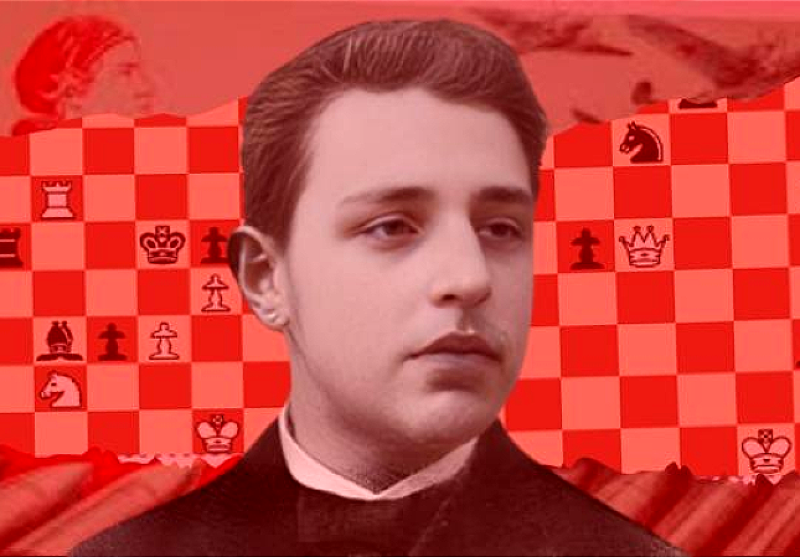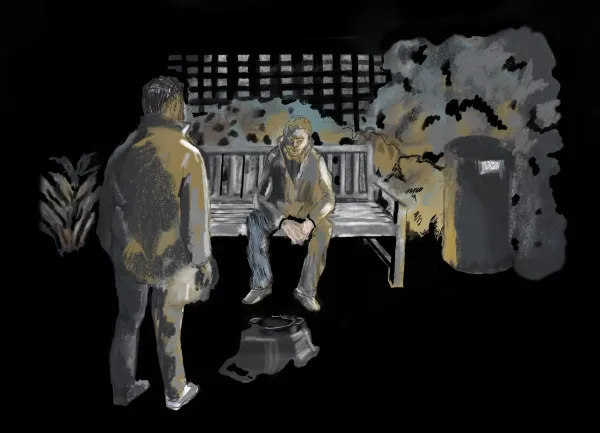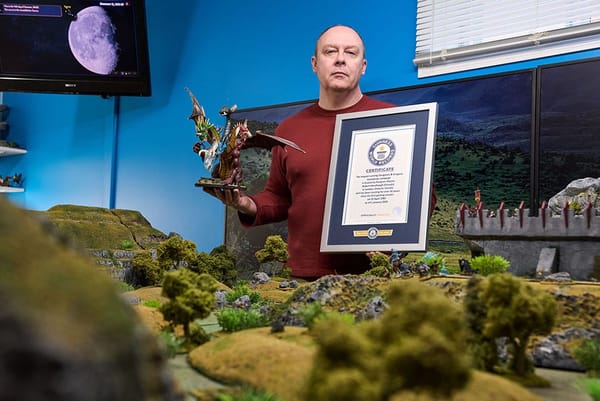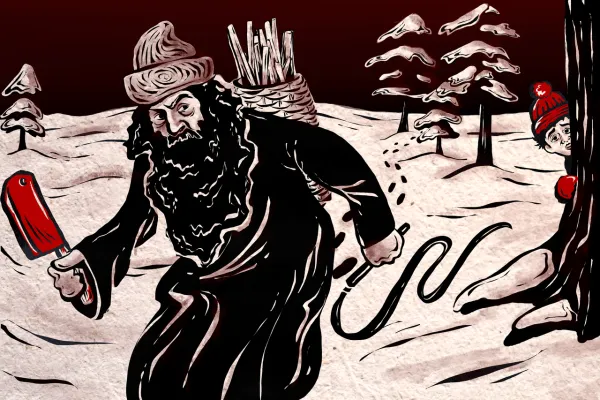His life depended on the outcome of a game of chess

From Chess.com: "Ossip Bernstein was born in 1882 in the small Ukrainian town of Zhytomyr. Although he wasn't serious about chess until his late adolescent years, he quickly made a name for himself while studying law in Germany. At nineteen, he almost earned the title of Master in his first tournament. A year later, he did obtain the title, and from then on, his rise to the top was incredible. In 1917, the Bolsheviks seized power and were determined to crush any political resistance from loyalists of the tsar, beginning the era of the "Red Terror." Bernstein, his wife and his two small children had to flee Moscow but were captured. He was imprisoned in a death camp, and one day a firing squad lined Bernstein and a number of other prisoners against a wall to be shot. Then a superior officer saw a list of the prisoner's names and asked Bernstein if he was the famous chess master,. When he said yes, the official made him play a game; when Bernstein won in short order, he had him led back to prison and later released."
The creator of MacPaint spent his later years trying to market a psychedelic vape pen

From Boing Boing: "Bill Atkinson, who died on June 5, 2025 at age 74, was famous for being the creator of MacPaint and QuickDraw. But within a private psychedelic community called OneLight, he was "Grace Within" — a mentor who refined and openly shared designs for the LightWand, a device for administering controlled doses of 5-MeO-DMT (known as Jaguar). Atkinson's involvement began in 2018 when he encountered the original LightWand at a ceremony. Though initially concerned about making such a powerful substance too accessible, he came to see the device's potential for safer, more controlled experiences. In 2021, he published detailed open-source instructions on Erowid.org, democratizing access to what had been limited to expensive retreats. He went on to gift over 1,000 LightWand sets and meticulously documented the technology's effects.
This eccentric inventor had a mock funeral and got mad when his wife didn't cry

From Wikipedia: "Timothy Dexter was born in Massachusetts Bay. He was from a poor family of Irish immigrants, had little schooling and dropped out of school to work as a farm laborer at the age of 8. He married 32-year-old Elizabeth Frothingham, a rich widow, and he then bought a mansion with the money. Dexter set up shop in the basement, selling moosehide trousers, gloves, hides, and whale blubber. Because he was largely uneducated, his business sense was considered peculiar. He was advised to send bed warmers for resale in the West Indies, a tropical area, a deliberate ploy by rivals to bankrupt him. He sold them as ladles to the local molasses industry and made a handsome profit. He sent wool mittens to the same place, where Asian merchants bought them for export to Siberia. In one notable episode, Dexter faked his own death to see how people would react, and when he did not see his wife cry, he beat her with his cane."
Hi everyone! Mathew Ingram here. I am able to continue writing this newsletter in part because of your financial help and support, which you can do either through my Patreon or by upgrading your subscription to a monthly contribution. I enjoy gathering all of these links and sharing them with you, but it does take time, and your support makes it possible for me to do that. I also write a weekly newsletter of technology analysis called The Torment Nexus.
A Tour de France rider tried not to win a stage because the special jersey would slow him down

From Club Sportico: "Italian cycling brand Santini is the official jersey provider of the Tour de France. While riders in the race typically wear jerseys made by their individual team’s sponsors, there are exceptions. The race’s four major competitions each have a special colored jersey—yellow for the overall leader, white for the best young rider, green for the best sprinter, and polka dots for the best climber — and if you’re the current leader in one of those classifications, you have to wear a Santini jersey in the race. Most of the time that’s no problem. But every Tour de France features a few time trials, in which riders go solo for shorter distances at an elevated output. For these stages the riders sport outlandish helmets, flashy bikes and state-of-the-art skinsuits. Like all the other stages, the leaders of those four classifications have to wear Santini skinsuits for the time trial. And this appears to be an issue."
He invented the dial telephone because a competitor stole his undertaking business

From the Kansas Historical Society: "Almon Strowger was born in Penfield, New York, in 1839. From a young age he was known to invent things. Strowger fought in the Civil War, and afterward came to settle in El Dorado or Topeka, Kansas. It was while working as an undertaker that he found the inspiration for his invention the dial phone. In the late 1880s Strowger was the only undertaker in town, and ran quite a profitable business. Suddenly he noticed his work had dropped off considerably, and that there was a new undertaker in town. Curious as to why so many were going to this new undertaker instead of him, Strowger found out it was because the telephone operator was married to this other undertaker. When anyone called for Stowger's business, she would direct them to her husband. At that time when anyone placed a call they had to first call in an operator who would then connect them to their intended party. Strowger found this system entirely unnecessary, and worked to come up with an invention that would allow callers to contact one another directly, without the need of a human intermediary."
How would you explain this to your insurance company?

Acknowledgements: I find a lot of these links myself, but I also get some from other newsletters that I rely on as "serendipity engines," such as The Morning News from Rosecrans Baldwin and Andrew Womack, Jodi Ettenberg's Curious About Everything, Dan Lewis's Now I Know, Robert Cottrell and Caroline Crampton's The Browser, Clive Thompson's Linkfest, Noah Brier and Colin Nagy's Why Is This Interesting, Maria Popova's The Marginalian, Sheehan Quirke AKA The Cultural Tutor, the Smithsonian magazine, and JSTOR Daily. If you come across something interesting that you think should be included here, please feel free to email me at mathew @ mathewingram dot com



